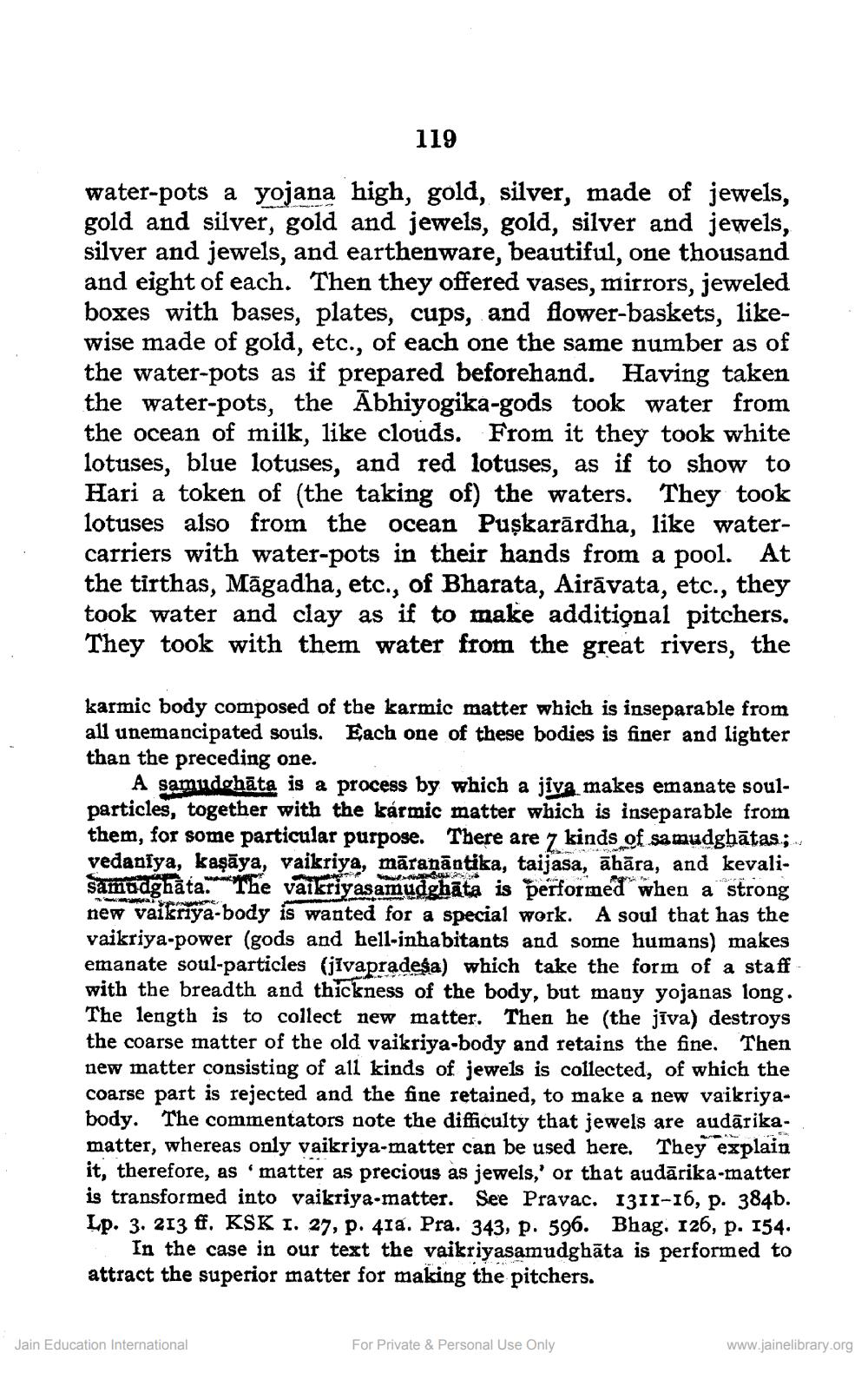________________
119
water-pots a yojana high, gold, silver, made of jewels, gold and silver, gold and jewels, gold, silver and jewels, silver and jewels, and earthenware, beautiful, one thousand and eight of each. Then they offered vases, mirrors, jeweled boxes with bases, plates, cups, and flower-baskets, likewise made of gold, etc., of each one the same number as of the water-pots as if prepared beforehand. Having taken the water-pots, the Abhiyogika-gods took water from the ocean of milk, like clouds. From it they took white lotuses, blue lotuses, and red lotuses, as if to show to Hari a token of (the taking of the waters. They took lotuses also from the ocean Puşkarārdha, like watercarriers with water-pots in their hands from a pool. At the tirthas, Māgadha, etc., of Bharata, Airāvata, etc., they took water and clay as if to make additional pitchers. They took with them water from the great rivers, the
karmic body composed of the karmic matter which is inseparable from all unemancipated souls. Each one of these bodies is finer and lighter than the preceding one.
A samudobāta is a process by which a jiva makes emanate soulparticles, together with the kármic matter which is inseparable from them, for some particular purpose. There are 7 kinds of samudgbātas; vedanīya, kaşāya, vaikriya, māranāntika, taijasa, ābāra, and kevaliSambaghāta a The vaiktiyasamudghāta is performed when a strong new vaitriya-body is wanted for a special work. A soul that has the vaikriya-power (gods and hell-inhabitants and some humans) makes emanate soul-particles (jivapradeśa) which take the form of a staff with the breadth and thickness of the body, but many yojanas long. The length is to collect new matter. Then he (the jīva) destroys the coarse matter of the old vaikriya-body and retains the fine. Then new matter consisting of all kinds of jewels is collected, of which the coarse part is rejected and the fine retained, to make a new vaikriyabody. The commentators note the difficulty that jewels are audārikamatter, whereas only vaikriya-matter can be used here. They explain it, therefore, as matter as precious as jewels,' or that audārika-m is transformed into vaikriya-matter. See Pravac. 1311-16, p. 384b. Lp. 3. 213 ff. KSK I. 27, p. 414. Pra. 343, p. 596. Bhag. 126, p. 154.
In the case in our text the vaikriyasamudghāta is performed to attract the superior matter for making the pitchers.
Jain Education International
For Private & Personal Use Only
www.jainelibrary.org




